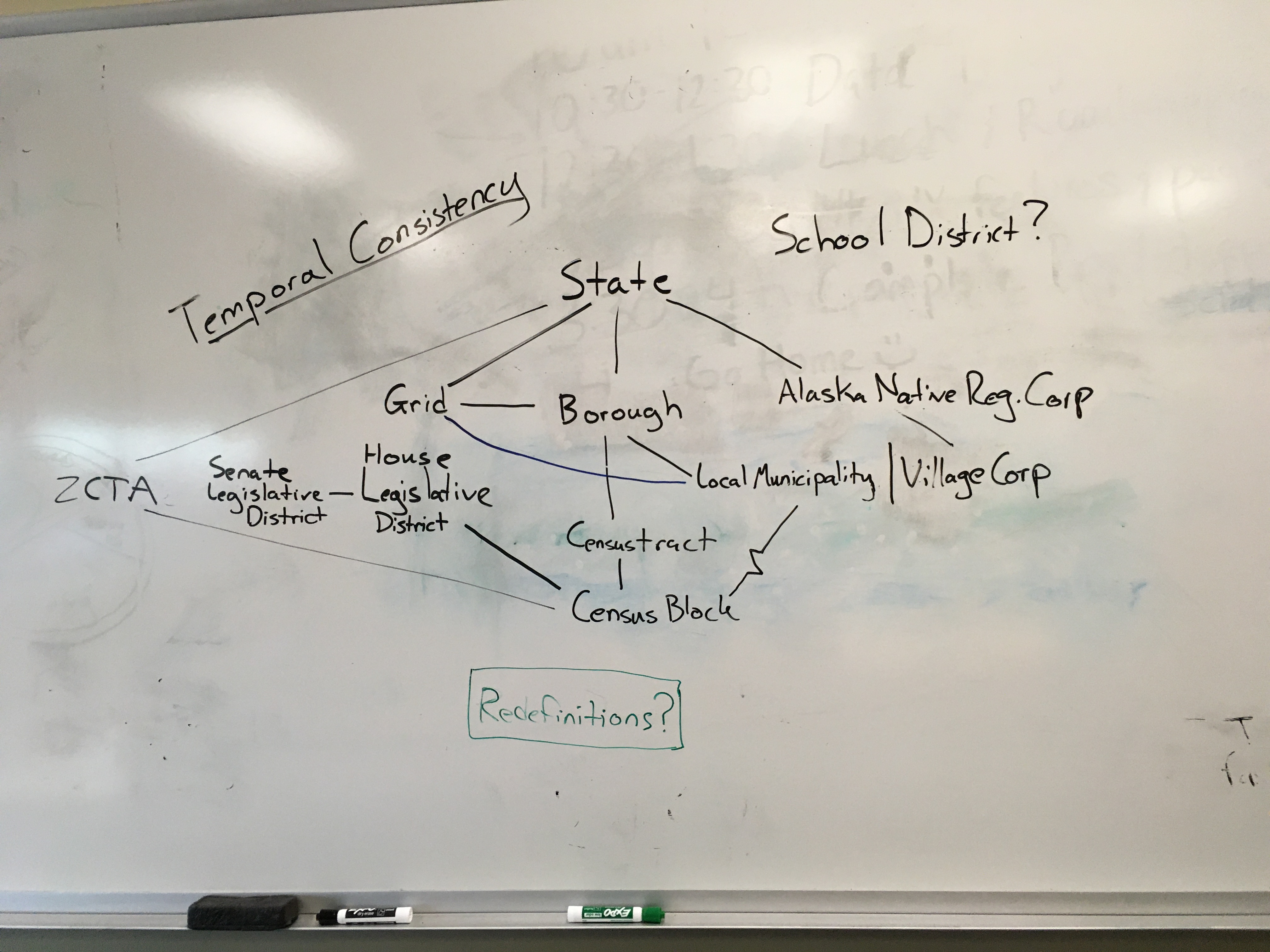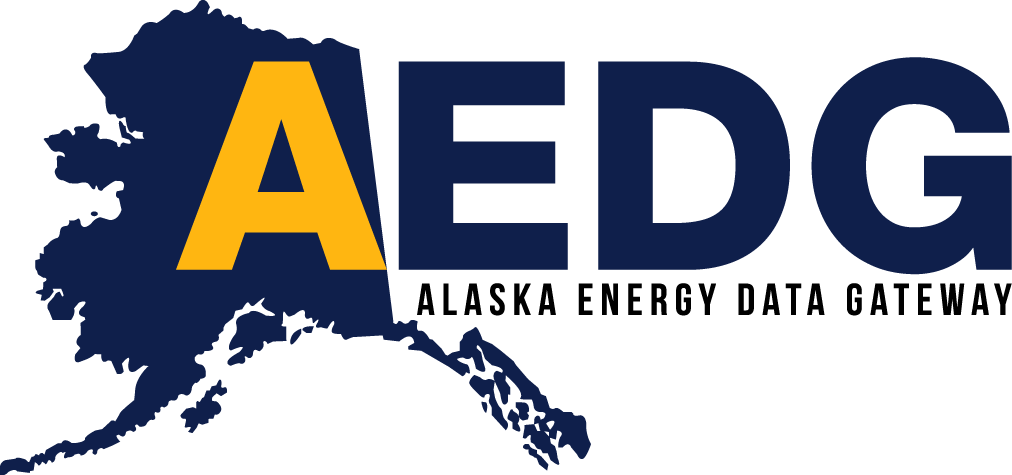Alaskan Community Ontology
Describing elements of the Alaska Energy Data Gateway (AEDG)
0.1 Welcome
This repository was founded to support a foundational element of Alaska Energy Data Gateway (AEDG): the need to crosswalk between the different spatial scales at which socio-economic and energy data are recorded. AEDG has historically displayed data for individual communities. However, some datasets, such as electrical grids and service areas, are only available for groups of communities. Eventually, AEDG will also display data for boroughs and legislative districts so community data itself will need to be aggregated.
To accomplish the computation of these aggregates in a reproducible way, a crosswalk between conceptual groupings of communities is required. This conceptual model will be applicable to diverse types of data. It will also guide the development of the algorithms that compute the aggregations and convert between them. As the development of AEDG continued, descriptions of energy concepts and spatial definitions were added.
0.2 Goal
The goal of this document is to provide a basis for transformation of data provided at different scales so that groupings at multiple scales can be accessed via AEDG dashboards.
This document addresses data that is provided at different scales:
- Interties and grids connect individual communities, pooling electrical generation among them.
- Electricity sales reporting is done by utilities for their services areas, which can be a different group of communities than grids connect.
- Reporting by zip code or census track obfuscates data collected at the household level, protecting personally identifiable information such as for building footprints.
- Analysis products such as the Spatial Energy Burden Analysis of the Fairbanks North Star Borough report at census tract level.
It also attempts to plan for serving different audiences which need data reported at different scales:
- Communities want a summary of their own data.
- Legislative Aides want summaries by legislative district.
- Agency leads might want to compare PCE communities with railbelt communities.

0.3 Format
This document consists of a series of web pages oriented around ontological concepts. The concepts are:
- Classes: Types of entities. Most are defined according to existing legal structures as described in the linked references. The main exception is Community, which is the organizational principle of previous versions of AEDG; we will define that one ourselves.
- Classes could be translated to tables in a relational database, if that makes sense for development.
- Instances of a Class are nodes in a graph, if you think about things that way.
- Classes are typically capitalized to differentiate them from instances or objects of that class, which are lower case.
- Properties: These are attributes of the Classes.
- Properties could take the form of columns in tables in a relational database.
- Relations: These can be hierarchical (taxonomy) or could form a network or graph (semantic web) of the various entities. If they are based on domain specific rules (Axioms), then that is what distinguishes an ontology. Relations enable AI to infer new information without people having to explicitly define everything.
- Relations are the edges in a graph.
- In a relational database, Relations can be encoded using a lookup table with a combination of foreign keys.
- Axioms: Domain-specific rules that encapsulate what we know about the Classes.
- Axioms could form the basis of quality checks to entered data or the definition of the ontology. For instance, if the axioms include
x = yandy = z, trying to enter anxthat isn’t equal tozwould fail a test.
- Axioms could form the basis of quality checks to entered data or the definition of the ontology. For instance, if the axioms include
If possible, this crosswalk will be machine readable/actionable. But to establish with consensus between our various subject matter experts, we needed to start with a single set of definitions and axioms (rules) expressed in a human readable form. The format of a Quarto web book tracked with git and published via GitHub was chosen so changes could be tracked with documentation of issue resolutions.
0.3.1 Common Properties
Some common properties are used by multiple classes. These are mostly based on the requirements of AEDG’s backend Rails database, and few are mandatory. Common properties include:
- id (int): the row number generated when the table is ingested into the database
- name (string): human readable label. We don’t use these as indices or unique identifiers, because they are rarely the same between data sets.
- date (string): time
- geometry (): geometry(Point, OGC:CRS84), geometry(Polygon, OGC:CRS84), geometry(MultiPolygon, OGC:CRS84) for locations and boundaries
- The ELT process generates GeoJSON with a coordinate reference system denoted as
"crs": { "type": "name", "properties": { "name": "urn:ogc:def:crs:OGC:1.3:CRS84" } }. This is equivalent to EPSG:4326 (WGS84) with the order changed from Lat-Long to Long-Lat.
- The ELT process generates GeoJSON with a coordinate reference system denoted as
- as_of_date (string): when the source data was published.
0.4 Possibly Applicable Standards
Whenever possible, existing resources are referenced to resist defining our own ontology from scratch. Example ontologies are:
- Schema.org is a widely used classification scheme built around web semantics - so more applicable to internet based services, of which AEDG is one.
- Dublin Core Metadata Terms (DCMT) are limited to only the most necessary terms. For instance, dc:Location is defined to include both spatial regions and named places, and puts no qualifications on the type or context. Similarly, an dc:Agent is merely “a resource that acts or has the power to act”. Wikipedia says: “Initially developed as fifteen terms in 1998 the set of elements has grown over time and in 2008 was redefined as a Resource Description Framework (RDF) vocabulary.”
- Open Energy Ontology (OEO), which can be accessed via this Terminology Service.
- The Census Glossary describes the terms associated with the census.
- Terms describing Alaska Native representation are complex. The definitions here are based on ANCSA Regional Association’s Overview, which is a description of the different tribal entities in Alaska with links to more information.
